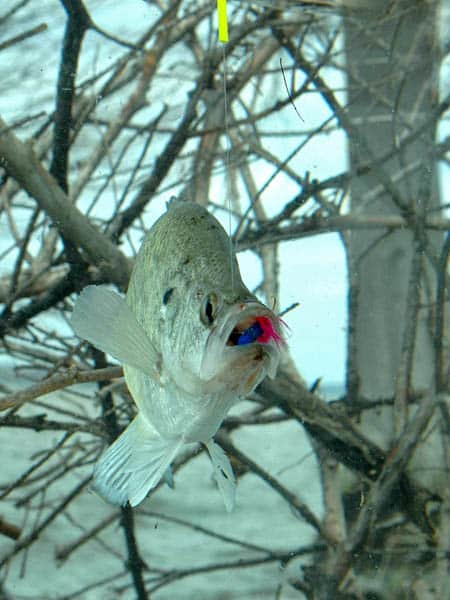Hot Summer Crappie Fishing Tips
John E. Phillips 07.06.12

In less than 30 seconds, my quill sank. I brought a 1-1/2 pound crappie over the gunwales of my boat. For the next 20 minutes, I continued to take crappie. Although the minnows-in-a-glass-jar idea of my uncle’s was strange, I realized that renegade tactics could produce crappie when no other methods of fishing would. From that early boyhood experience, I started looking for renegades in the sport of crappie fishing – both men and women who broke with traditional tactics and utilized off-the-wall strategies to consistently catch crappie. I wanted to find those unusual individuals who used creative alternatives to take crappie.
The other angler in my blistering weather contest also was highly successful fishing for crappie in deep water. “During the summer months, especially the hottest times of July and August, you usually find crappie on creek channels and river ledges in the main part of the river or lake where you find cooler water and a little current carrying oxygen,” the jig expert said. “But these fish often will be 15 to 30 feet deep, which is deeper than most crappie fishermen want to fish or know how to fish.”
To get to these deep water crappie and catch them, he uses a 1/24 or a 1/16 ounce jig. “I locate the spot where the crappie are holding on my depth finder and put a buoy market near where I see the crappie holding. Then I back away from that place and anchor my boat. I cast my jig to the area where I’ve spotted the crappie. When the jig hits the water, I feed line off my spinning reel and watch the line as the jig drops vertically to the waiting fish. As soon as I see the line jump or stop, I set the hook. Because you must watch the line to know when you get a strike, fish with hi-vis line. Usually deep water crappie will hit the jigs on the fall. Using this technique, I can fish my jigs from the surface all the way to the bottom and catch the crappie holding in that deep water.
“If the crappie are finicky and not biting very aggressively, you may want to fish 6-pound-test line and a 1/24 or 1/32 ounce jig. Using the bigger line and the lighter jig means your jig will fall slower – allowing the crappie to see the bait longer and perhaps causing the crappie to bite better. If the fish are hitting aggressively, I’ll use a 1/16 ounce jig and 4 pound test line to help my bait fall faster, get to the bottom quicker and solicit more strikes. Although I do take some crappie when reeling my bait back from the bottom to the boat, 80 percent of the crappie I catch during the hot summer months, I take as the jig falls from the surface to the bottom.”
To read more about fishing for crappie in 100 degree heat, click here.
To learn more about successful crappie fishing year-round, buy John E. Phillips’ book, “The Masters’ Secret of Crappie Fishing,” by going to www.nighthawkpublications.com/fishing/masterscrappie.htm.

